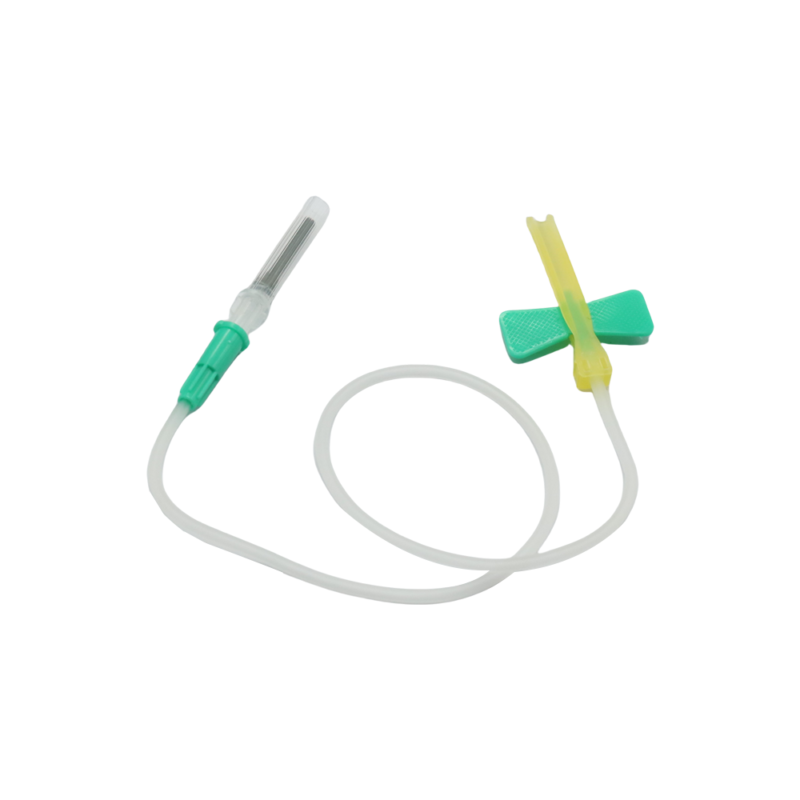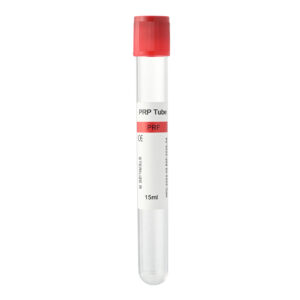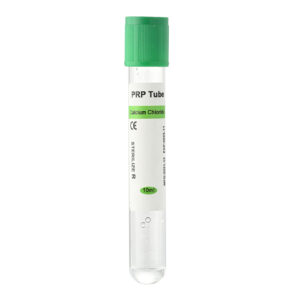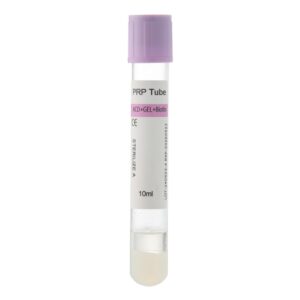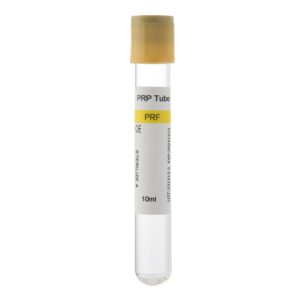A butterfly needle, also known as a winged infusion set, is a medical device primarily used for venipuncture and drug injection. Unlike traditional straight needles, butterfly needles have a unique design with “wings” on either side of the needle, resembling the shape of butterfly wings. This design offers greater flexibility and control, making it ideal for precise procedures, especially in delicate situations like drawing blood from small veins or for patients who are particularly sensitive to needles.
Medical professionals widely use butterfly needles, especially when they require high accuracy. They commonly use them for children, elderly patients, or those with fragile veins, where comfort and precision are paramount.
The Basic Structure of a Butterfly Needle
A butterfly needle consists of a sharp needle and two small “wings” attached to its body. The wings help stabilize the needle and provide better control during insertion, reducing the risk of error. This design makes the butterfly needle especially useful for performing short-term, multiple punctures, such as when healthcare professionals need to draw blood from hard-to-access veins.
Butterfly needles come in different sizes, typically measured by the gauge (G), such as 21 G, 23 G, and 25 G. The size of the needle affects its suitability for various patient needs and medical procedures, so it’s important to choose the correct size for each situation. Below, we explain the various sizes and their most common uses.
Choosing the Right Needle Size for a Butterfly Needle
The size of a butterfly needle, indicated by its gauge, determines the needle’s diameter. The higher the gauge number, the smaller the needle’s diameter. Different sizes are suitable for different medical needs, and using the correct size is essential for the success of the procedure, as well as the comfort of the patient. Here are the most common sizes:
- 21G Needle: The 21G butterfly needle is one of the larger sizes, commonly used for adults with larger veins. Due to its wider diameter, 21G is suitable for procedures that require a faster blood flow, such as drawing larger blood samples or administering injections quickly. However, because it’s larger, the insertion may cause more discomfort. It’s best used when speed is more important than patient comfort.
- 23G Needle: The 23G butterfly needle is one of the most commonly used sizes. It strikes a good balance between speed and comfort, making it suitable for most adults and some children. This size is ideal for drawing blood or injecting drugs in medium-sized veins. It causes less discomfort compared to 21G and works well for a variety of patients and situations.
- 25G Needle: The 25G butterfly needle is smaller and typically used for patients with smaller or more fragile veins, such as children, elderly individuals, or those with small veins. While it causes less pain due to its smaller diameter, it may result in a slower flow of blood or slower injection times. This size is ideal for delicate procedures requiring smaller blood samples or injections with minimal discomfort.
Common Applications for Butterfly Needles
Healthcare providers use butterfly needles in a variety of medical scenarios, from routine blood draws to more specialized injections. The choice of needle size depends on several factors, including the size of the patient’s veins, their age, and the purpose of the procedure. Here are some common applications:
- Venipuncture (Blood Draw): Healthcare providers usually prefer 21G or 23G butterfly needles for adult patients with medium or large veins, as these needles allow for quicker blood collection. Children, elderly patients, or those with smaller veins, choose 23G or 25G needles to reduce pain and minimize vein damage.
- Drug Injection: Healthcare providers commonly use butterfly needles for precise drug injections, such as antibiotics or intravenous nutrition. They typically choose the 23G and 25G sizes in these situations, as these needles provide enough flow without causing excessive discomfort to the patient.
- Special Sample Collection: For procedures like PRP (Platelet-Rich Plasma) extraction, where precision is key, healthcare providers may use a 25G needle to minimize pain while ensuring high-quality blood samples. Healthcare providers prefer smaller needles for collecting small volumes of blood, prioritizing patient comfort.
How to Choose the Right Butterfly Needle Size?
When choosing the right butterfly needle, there are several factors to consider:
- Patient Age and Size: Healthcare providers prefer smaller needles, such as 25G, for children or infants because their veins are small and fragile. Healthcare providers typically use 21G or 23G needles for adults, depending on the size of the veins and the procedure being performed.
- Size and Type of Vein: Healthcare providers use thicker needles like 21G for larger veins, such as those in the arm, while they choose thinner needles like 25G for smaller veins, such as those on the back of the hand or feet. If the veins are exceptionally small, even finer needles, such as 26G or 27G, may be necessary.
- Type of Medical Procedure: For faster blood flow or larger blood samples, choose 21G or 23G. For injections or blood draws that require more precision or are performed on delicate veins, healthcare providers choose a smaller needle like 25G.
Advantages of Butterfly Needles
- Increased Comfort: Healthcare providers design butterfly needles to cause less pain during insertion, making them ideal for patients requiring frequent needle use, such as chemotherapy or blood tests. The winged design allows for more controlled movement, reducing the likelihood of vein damage.
- Precision: The flexible design of the butterfly needle makes it easier to position accurately, which is essential for blood collection and drug injections. It provides healthcare professionals with better control over the needle’s direction.
- Versatility: Butterfly needles are suitable for both adult and pediatric patients, and they are also effective for use in small, difficult-to-access veins. Their versatility makes them a preferred choice for a wide range of medical procedures.
Conclusion
Choosing the right butterfly needle is critical for the success of medical procedures, including blood draws, drug injections, and other delicate operations. By understanding the differences between needle sizes and considering factors such as patient age, vein size, and the purpose of the procedure, healthcare professionals can select the best needle for the job. Properly selecting the needle size helps minimize patient discomfort, improve the accuracy of the procedure, and ensure a positive medical experience.

